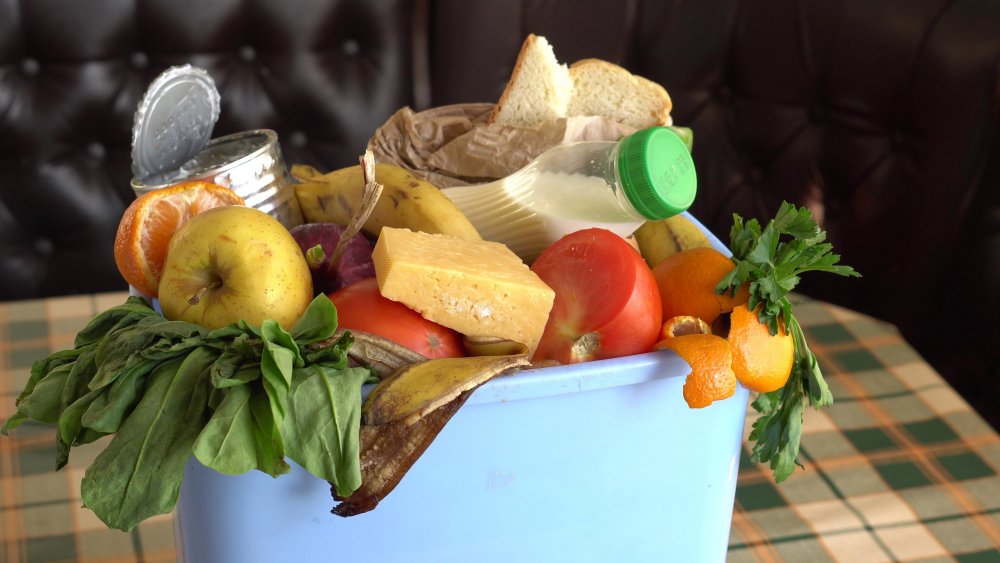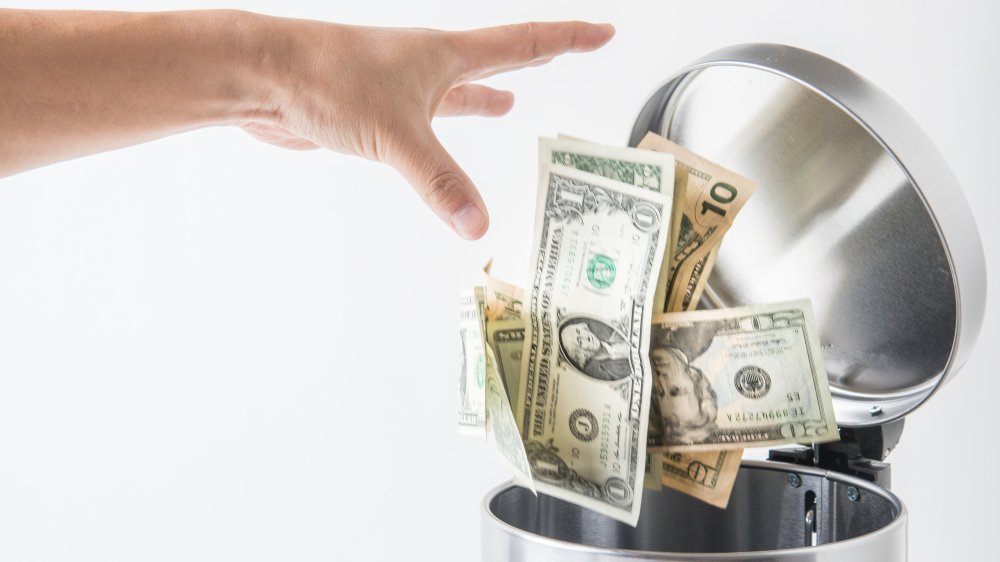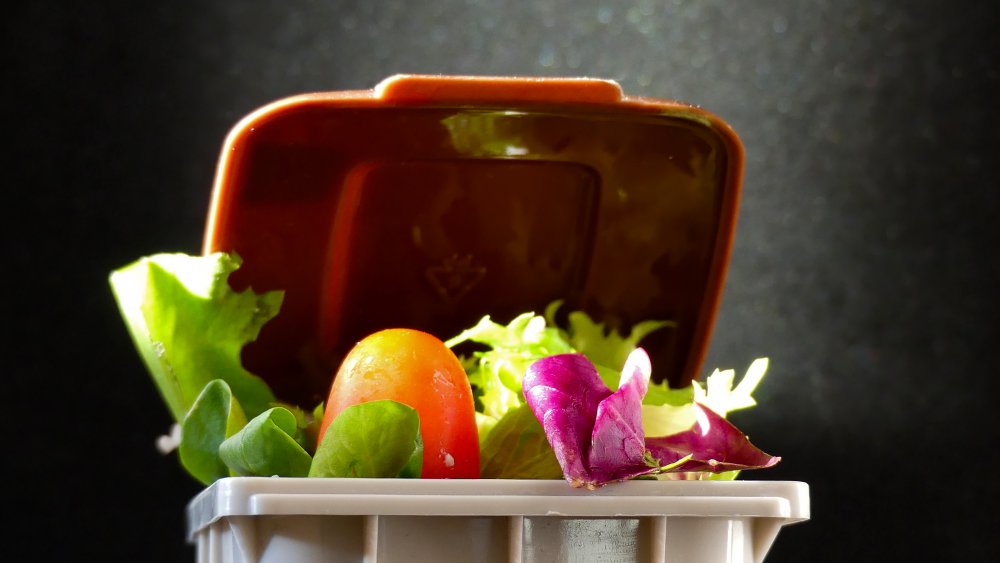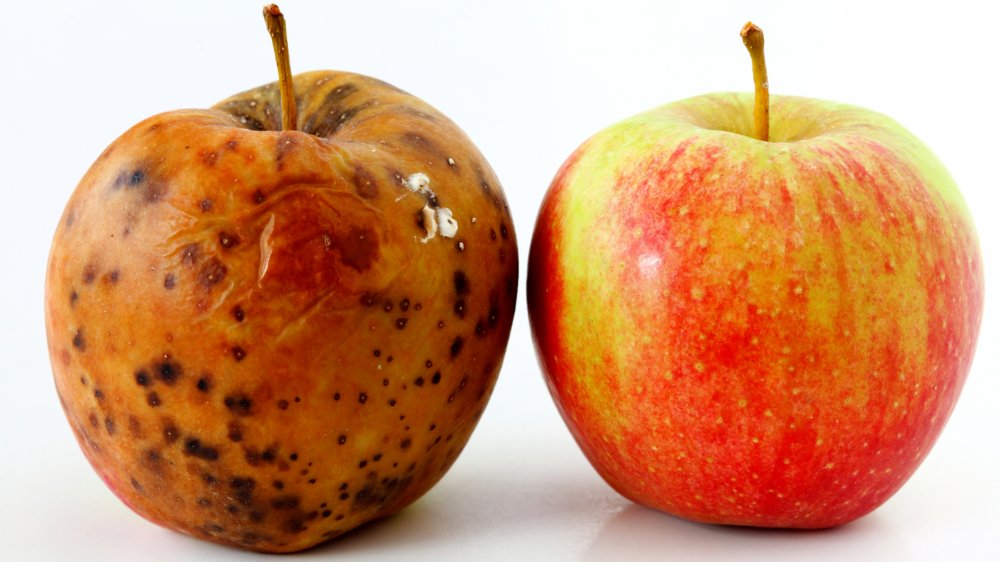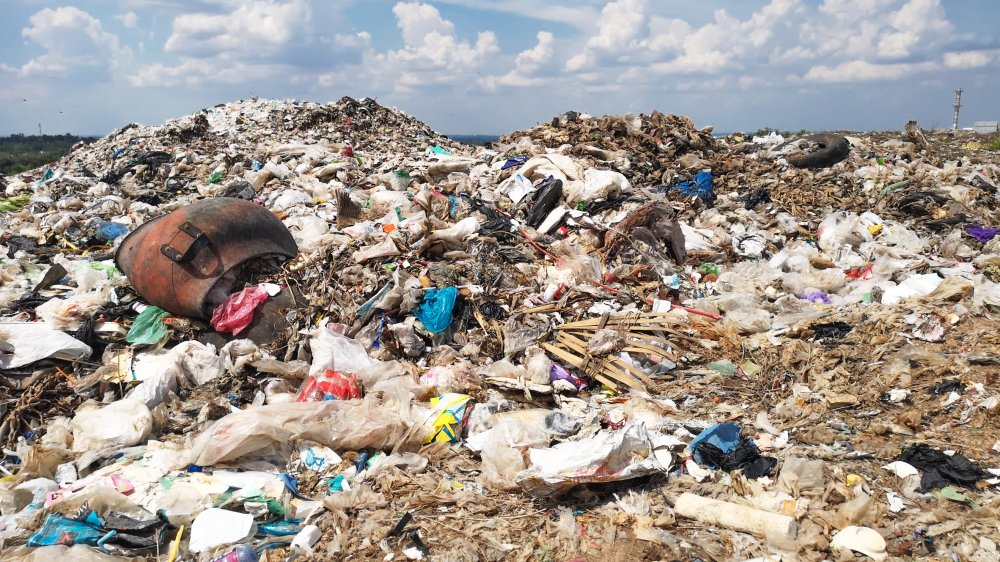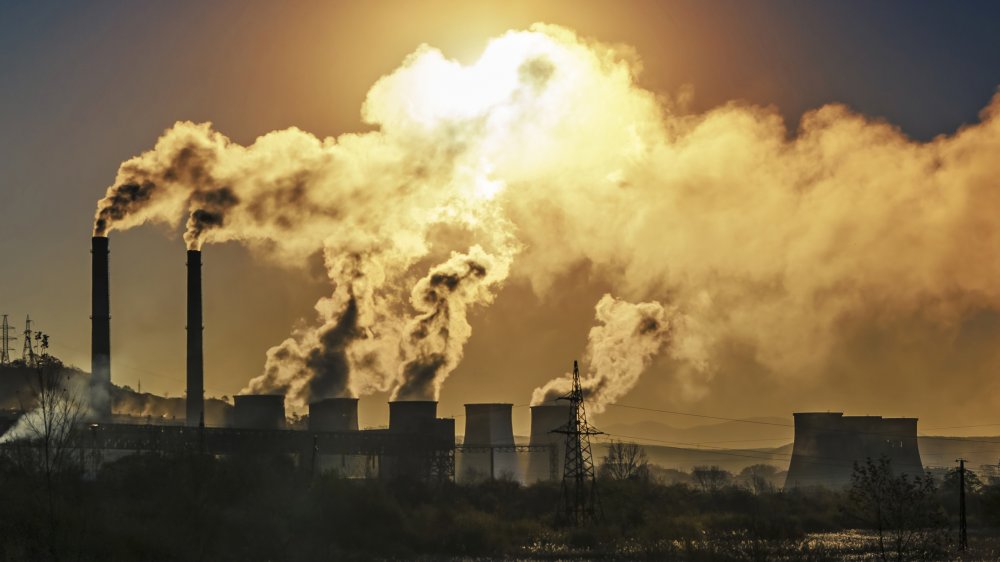Crazy Food Waste Facts You Won't Believe
For some of the world, food is an endless possibility. There's no cuisine that you cannot experience, no flavor you can't enjoy, no time of day you can't grab a bite to eat. Indeed, for many people, food is an issue of "what will I eat?" Not "will I eat?" Maybe that's why we can be so nonchalant about letting good food go to waste.
The unfortunate and uncomfortable truth is that 820 million people around the world are undernourished. This number is devastating enough before we learn that the world throws out more than enough food to feed each and every one of these people, and then some.
An astounding amount of food across the globe gets wasted. This is due to a host of reasons, like throwing out leftovers, letting good food spoil in the back of the refrigerator, and living or dying by an expiration date. These crazy food waste facts will help put the problem in clearer context.
Approximately $1 trillion of food is lost or wasted every year
It's easy to think that the apple you threw away because of a bruise mark is no big deal. But when you consider it contributed to an unfathomable amount of wasted money, you might reconsider. It's nearly impossible to understand just how much $1 trillion is. But let's try.
For context, $1 trillion is a higher gross domestic product than all but 16 countries. That means that all the wasted food in the world costs more than all the goods and services produced by the vast majority of countries. Want to look at it a different way? With $1 trillion, you could buy Apple — not the fruit, the company. In fact, all this waste accounts for approximately a third of the world's food.
The World Food Program says that reversing this trillion-dollar trend would provide enough food to feed two billion people for the year, which is more than double the number of undernourished people across the world.
Americans waste 133 billion pounds of food each year
It may come as no surprise that Americans are some of the leading contributors to food waste in the world. But the actual amount of edible food tossed away in the United States is downright staggering. According to the United States Department of Agriculture, in 2010, the country wasted 133 billion pounds of food each year. This number represents 30 to 40 percent of America's food supply.
If 133 billion is too large a number to wrap your head around, look at it this way: Each person in the United States throws out more than 200 pounds of food annually.
Americans aren't alone in their wasteful habits, however. Most of the developed world is (almost) as guilty. According to the United Nations, citizens living in wealthy countries waste 222 million tons of food, almost as much as the entire net food production of sub-Saharan Africa (230 million tons).
In 2010, American food waste costed approximately $161 billion
Now that we know how much food we waste, the question is how much money we waste on food. The answer is a lot. To put $161 billion in perspective, think of it this way: If you owned all the wasted food in America, you'd be the second-richest person in the world.
Another way of looking at this — if you took the country's entire stock of wasted food and sold it, you'd have enough money to give every one of the of 330 million people in the United States — every man, woman, and child — nearly $500.
Just think about it. How much produce do you let go bad in your fridge? How many leftovers have you allowed to spoil? How many times have you ordered takeout when you knew you had something going bad in the fridge? When you throw that old food away, you're essentially throwing cash in the trash.
Saving a quarter of the food we waste now could feed all the hungry people in the world
In 2018, there were approximately 820 million people worldwide who did not have enough food to eat. According to the United Nations, if collectively the world wasted just 25 percent less food, that extra food could feed 870 million.
The number of hungry people on Earth breaks down to one in every nine people globally. And this number is only going up: 2018 was the third year of increase in a row, up from 811 million in 2017.
The numbers are even more staggering when you take a big-picture look at hunger. In 2019, there were roughly two billion people who were moderately or severely food insecure, which equals over 25 percent of the world's population. Furthermore, roughly 20.5 million babies were born with low birth weight in 2015. That means all the food we're wasting could be going to those who actually need it.
A ton of food waste is from throwing out 'ugly' produce
We're all guilty of browsing the grocery aisles and looking past the bruised fruit and funky-looking vegetables. It seems innocent enough until you realize that if we all do this, that poor little bruised apple just ends up in the trash. And that's exactly what is happening to half of all the produce in the United States. This comes out to 60 million tons of fruits and vegetables.
It's all the more disconcerting and upsetting when you consider that so-called "ugly" produce is perfectly edible. Generally, any cosmetic deformity is just skin deep and does not affect the taste. Nor does it have any detriment on the nutritional value of food.
One easy hack to enjoying "ugly" fruits and vegetables is to cook them. When used in soups, sauces, and baking, most produce loses all of its original appearance and texture but retains its great taste. Need another reason to try weird-looking food? It's usually cheaper. Since these foods aren't very popular, grocers will often offer them at a discount just to get them out the door. There are even specialty retail services offering only "ugly" produce.
One food that Americans waste a lot of? Turkey ... on Thanksgiving
We've all been there before. Your family cooks up a huge turkey as the centerpiece of your Thanksgiving feast. They carve out all the pieces of meat and then throw the carcass, along with all the scraps, into the trash. It might not seem like much but when every household does it, it adds up to millions of pounds of food being wasted — 204 million pounds, to be exact.
One solution nobody wants to hear but could go a long way is portion planning. When presented with the feast of the year, we tend to pile on the food sky-high. Inevitably, we can't finish all of it, and everything uneaten on the plate gets thrown in the trash. Whether that's buying too much food or just overfilling your plate, it can all add up to be a huge problem.
Another problem is people carving the turkey but leaving all the scraps behind. Nearly every part of the turkey can be eaten. (Even the bones, though not edible, can be used to make stocks and broths.) If you're sick of eating turkey leftovers, freeze some of the meat and use it for a meal later on.
Expiration labels lead to more food waste
It's commonly thought that expiration dates exist for the consumer's protection, but that is not always the case. They can also be a tool manufacturers use to boost sales. An earlier expiration date helps food companies cycle through their products quicker. Consumers buy the product, wait too long to eat it, are forced to throw it out, and then buy more. This is why expiration dates are a leading cause of food waste.
They can also often be completely meaningless. A study by Harvard Law School and the Natural Resources Defense Council found that these dates are often based on peak freshness, not when the food is about to go bad. This is particularly important to remember when distinguishing between "use by" and "best by" dates. The former is used on perishable items while the latter simply describes products that may not taste as good but are still safe to consume.
According to Consumer Reports, non-perishable foods are often still good well past their label dates. And don't be so quick to throw away meat, dairy, and eggs. Although these items certainly have a shorter shelf life, their expiration dates may not tell the whole story. Foods that have gone bad will usually exhibit different texture, color, and smell. Foodborne illness usually comes from contamination and poor storage, not spoilage.
Food waste is taking up tons of space
We know by now just how much time, energy, and money are thrown down the drain when we waste food. But there's another important resource eaten up by this trend: space.
More than one quarter of all Earth's agricultural land is wasted by growing food nobody will ever eat — 28 percent of it, to be exact. It's an area larger than Canada, the world's second-largest country by size. Just how big is our neighboring country to the north? It encompasses 3.8 million square miles, stretching all the way up to the Arctic Ocean. For perspective, the UK could fit into Canada more than 40 times.
What's even more troubling is that the Earth is running out of land suitable for growing crops. In 2015, The University of Sheffield's Grantham Centre for Sustainable Futures discovered that around one-third of the planet's farmable land had been destroyed by erosion or pollution over the past 40 years. In order to sustain our food sources, we simply cannot waste the land we have.
Households waste the most food in the U.S.
Most would assume that the majority of food waste would occur at restaurants and grocery stores. These are the places holding the most food, and whatever doesn't sell has to go. For better or worst, these venues are not the worst offenders — we consumers are. It turns out the last chain in the supply system, the household, is the largest contributor to food waste.
In the United States, households throw out $144 billion worth of edible food. That accounts for 43 percent of America's wasted food.
There are several common consumer behaviors that contribute to this overabundance of waste. Among them are food spoilage, over-preparing, and poor shopping. According to FoodPrint, about two-thirds of the food in American homes spoils simply because it is not used in time. This could be the product of buying too much food, improper storage, or lack of visibility in the refrigerator.
Over-preparing is a big issue too. Large meals often contain portions too big to fully eat. Leftovers get discarded or wind up in the back of the fridge ... where they inevitably spoil before being tossed in the garbage.
Food waste is taking up space in our landfills
Wasted food makes up roughly 15 percent of all landfills in the United States. It's the second-largest contributor — only paper and cardboard gets thrown out more. Why is food ending up in landfills such a problem? One word: methane. When organic material like food gets deposited, methane-producing bacteria begin to decompose the waste within one year. Methane is an extremely dangerous greenhouse gas. According to the Environmental Protection Agency, it's 28 to 36 times more effective than carbon dioxide at trapping heat in the atmosphere over a 100-year period.
And considering that landfills are the third-largest source of methane emissions from human causes in the U.S., it's safe to say that all this food waste is making a big impact. Methane itself is the second-most abundant greenhouse gas in our atmosphere. This substance, of course, has a devastating impact on our climate, producing a significant warming effect.
If food waste were a country, it would be the third-largest emitter of greenhouse gas emissions in the world
Based solely on the amount of dangerous gas it produces, food waste could be a global powerhouse in and of itself. Only China, with its 1.4 billion people, and the United States, with its 330 million, could top it. That means food waste emits more greenhouse gas than all the 1.3 billion people in India, 211 million in Brazil, and 144 million in Russia, just to name a few.
In fact, U.S. food waste alone accounts for the equivalent of the greenhouse gas produced from 37 million cars. Although most greenhouse gas emissions from the food system come from food that does get eaten, wasted food makes up a considerable portion. According to the World Wildlife Foundation, approximately 11 percent of these emissions could be reduced if we stop wasting food.
